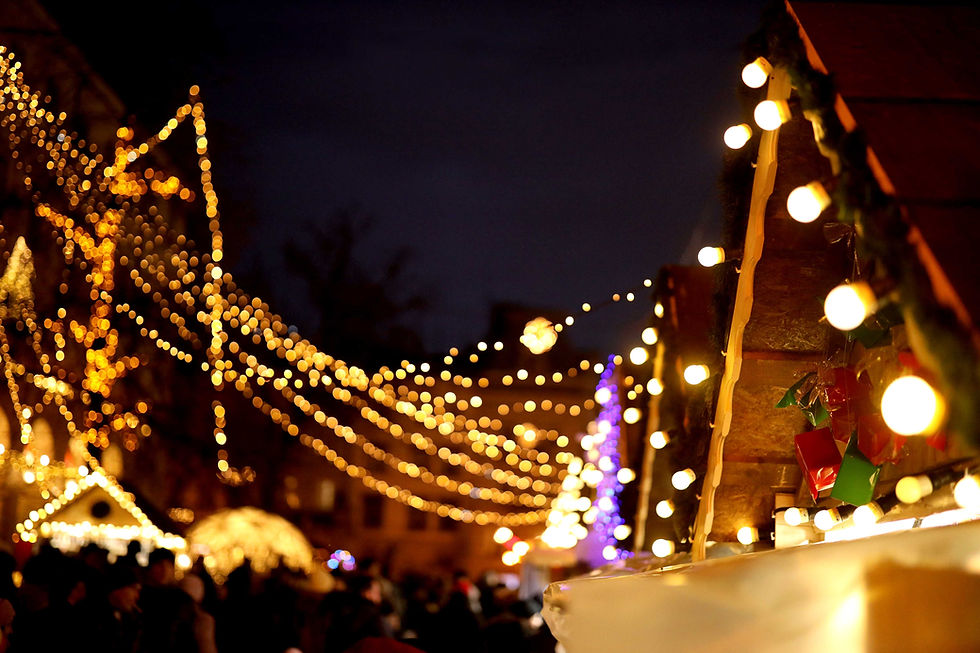Of rabbits, kittens, and flying bells: Tips for Easter week in Vienna
- AlpineFoxes Team

- Apr 5, 2023
- 3 min read
Updated: Mar 4, 2024

Every year in early spring in Vienna there are more and more indications that a special celebration is approaching: The flower stores are dominated by palm catkins, the supermarkets by chocolate bunnies, and on the squares of the city, which not so long ago played host to Christmas markets, exactly the same familiar huts appear with only slightly varied offerings. Then you know: Easter is approaching! A good reason for curious city explorers to take a stroll through Vienna in search of Easter traditions during Holy Week. With the help of this AlpineFoxes article, of course!
I always like to start with St. Stephen's Cathedral: Until 1783, St. Stephen's Cathedral was surrounded by the "Stephansfreithof", the largest cemetery within the city walls. The individual grave fields were separated from each other by paths and had special names. There was the Fürstenbühel to the north of the nave, the Studentenbühel towards Schulerstraße and the Römerbühel towards Churhausgasse. A fourth small group of tombs was located on an elevation near the north tower of the cathedral.

Right here, at the so-called "Palmbühel", the Easter consecration of the palm branches took place at the beginning of Holy Week for centuries. Up to the present time the Palmkatzerl are consecrated on Palm Sunday. This ecclesiastical tradition has been preserved, but the Stephansfreithof has long since ceased to exist. But if you walk around the cathedral and look carefully at the ground, you will see stylized darker crosses on the light gray floor tiles, which are meant to remind you of the old cemetery.
On Maundy Thursday, Christians celebrate Jesus' Last Supper. The liturgical custom includes the washing of the feet, which from the 17th century also had its fixed place at the Viennese imperial court as a courtly and rather bizarre ceremony during Holy Week. Needy old men (today one would say seniors) could apply for acceptance to the foot washing. The twelve lucky chosen ones were examined by a doctor and pre-washed, so to speak, as a precautionary measure, were given new clothes and were taken to the Hofburg after Mass on Holy Thursday, where the emperor then washed their feet. Subsequently, a symbolic feeding (spinach?) was held and the poor were given gifts. Analogous to the washing of the feet by the emperor, the empress performed the ritual on twelve needy old women. The names of those honored in this way, as well as their age and the sum of all their years together, were published annually in the Wiener Zeitung from 1703 onwards!
You want to know more about the exciting imperial foot washing? Then you have to go to the Imperial Silver Chamber! There, the ritual is described in great detail, you can see an example of a list of names and also the clay tableware that was specially made for the event. But please don't go there until after the Easter vacations, because now the museum is just too crowded, although most guests tend to go up to the Sisi Museum anyway. Man's will is his kingdom...
Alternatively, a visit to the wonderful Imperial Treasury in the Schweizerhof of the Hofburg is a good alternative to the topic of foot washing: there, a piece of the apron that Jesus wore when washing the apostles' feet is exhibited as a relic. Right next to a piece of cloth from the tablecloth of the Last Supper. That's quite something and fits the theme just perfectly!
From Maundy Thursday evening until the Easter Vigil, by the way, you can walk around all the churches in Vienna as much as you want, but you still won't hear a single bell. They have all flown to Rome, including the Pummerin, the largest and most famous bell in Austria. But it is all the more beautiful to experience the Pummerin at one of its rare appearances! Standing at St. Stephen's Square when the Josephine Bell, as is the formal name of the Pummerin, rings is an incredibly intense experience! The next chance for this is in the Easter Vigil on Holy Saturday at about 23:00 and on Easter Sunday about between 11.50 and 12.10.

Finally, I need to give another little hint: It wasn't always the Easter bunny who brought the eggs! In former times it was the Easter fox! You can find stories about an Easter fox in German folkloric literature until the middle of the 19th century. Sometime after then the hare asserted itself. This nerd!
What do you think? Should we replace the Easter bunny with the Easter fox? And what do you want to know about Vienna next? Let me know in the comments!
I look forward to exploring together, at Easter and beyond. And of course I wish you HAPPY EASTER!
Yours
Claudia from the AlpineFoxes




Commenti